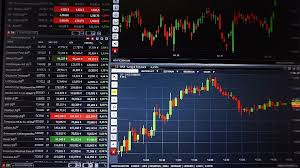
Mastering Forex Market Trading: Strategies and Insights
Forex market trading is a dynamic and exhilarating venture that attracts traders from all over the globe. The potential for significant profits combined with the inherent risks makes it essential for anyone interested in this field to develop a well-rounded understanding of the marketplace. In this article, we will explore key aspects of Forex trading, including market analysis, effective strategies, and the importance of choosing the right broker, such as forex market trading MT4 Forex Brokers.
Understanding the Forex Market
The foreign exchange market, or Forex market, is the largest financial market in the world, with a daily trading volume exceeding $6 trillion. Forex trading involves the exchange of currencies and is conducted over-the-counter (OTC) through a network of banks, financial institutions, and individual traders. Unlike stock markets, the Forex market operates 24 hours a day, five days a week, allowing traders to execute trades at any time regardless of their geographical location.
Key Participants in Forex Trading
Several key participants play crucial roles in the Forex market, including:
- Central Banks: They influence monetary policy and regulate currency supply, impacting exchange rates.
- Commercial Banks: They facilitate currency transactions for individuals and businesses, making them significant players in the market.
- Corporations: Businesses engaged in international trade use Forex to hedge against currency risks and convert profits into their local currencies.
- Retail Traders: Individual traders, like you, who trade on their own behalf, seeking to profit from currency fluctuations.
Types of Forex Analysis
To make informed trading decisions, traders often rely on various analysis techniques:
1. Fundamental Analysis
Fundamental analysis involves examining economic indicators, geopolitical news, and other macroeconomic factors that influence currency values. Key indicators include:
- Gross Domestic Product (GDP)
- Employment Figures
- Inflation Rates
- Interest Rates

Understanding these indicators helps traders predict currency movements and make informed trading decisions.
2. Technical Analysis
Technical analysis focuses on historical price movements and trading volumes to identify patterns and trends. Traders utilize various charting tools, indicators, and patterns, including:
- Moving Averages
- Bollinger Bands
- Support and Resistance Levels
- Chart Patterns (e.g., head and shoulders, triangles)
By analyzing price action, traders can develop strategies to enter and exit trades effectively.
3. Sentiment Analysis
Sentiment analysis involves gauging the overall mood of the market to understand how traders feel about a particular currency. This analysis can provide insights into potential market movements, as extreme sentiment can often lead to reversals or corrections.
Effective Trading Strategies
While there are countless Forex trading strategies, here are a few popular approaches that traders find effective:
1. Trend Following
The trend-following strategy involves identifying and aligning with the current market direction. Traders use various tools, like moving averages or trendlines, to confirm trends and take positions accordingly.
2. Range Trading

Range trading is based on the idea that prices often move within certain levels (support and resistance). Traders buy when prices approach support and sell when they approach resistance, capitalizing on the range.
3. Breakout Trading
Breakout trading focuses on identifying key levels where the price is likely to break out of a range or pattern. Traders enter positions when the price breaks above resistance or below support, anticipating strong momentum in the direction of the breakout.
4. Scalping
Scalping is an ultra-short-term trading strategy where traders aim to profit from small price movements. Scalpers make numerous trades throughout the day, relying on high leverage and small price changes.
The Importance of Choosing a Reliable Broker
Choosing the right broker is crucial for successful Forex trading. A reliable broker should offer competitive spreads, a user-friendly trading platform (like MT4), educational resources, and excellent customer support. Additionally, ensure that the broker is properly regulated to protect your investments.
Risk Management
Risk management is an essential component of Forex trading that can significantly impact your trading success. Here are key tips for effective risk management:
- Set a Risk-Reward Ratio: Determine how much you are willing to risk on each trade and set profit targets accordingly. A common ratio is 1:2.
- Use Stop-Loss Orders: Always use stop-loss orders to limit losses in case the market moves against your position.
- Diversify Your Portfolio: Avoid putting all your capital into one trade. Diversifying can help mitigate risks.
- Stay Informed: Continuously educate yourself about market trends and news that could impact your trades.
Conclusion
Forex market trading offers thrilling opportunities for profit, but it requires knowledge, skills, and a solid trading plan. Understanding market dynamics, employing effective analysis techniques, and choosing a reliable broker are critical steps to achieving trading success. Moreover, implementing strong risk management strategies will help you navigate the inherent volatility of the Forex market. With dedication and practice, you can hone your trading skills and work towards becoming a successful Forex trader.
